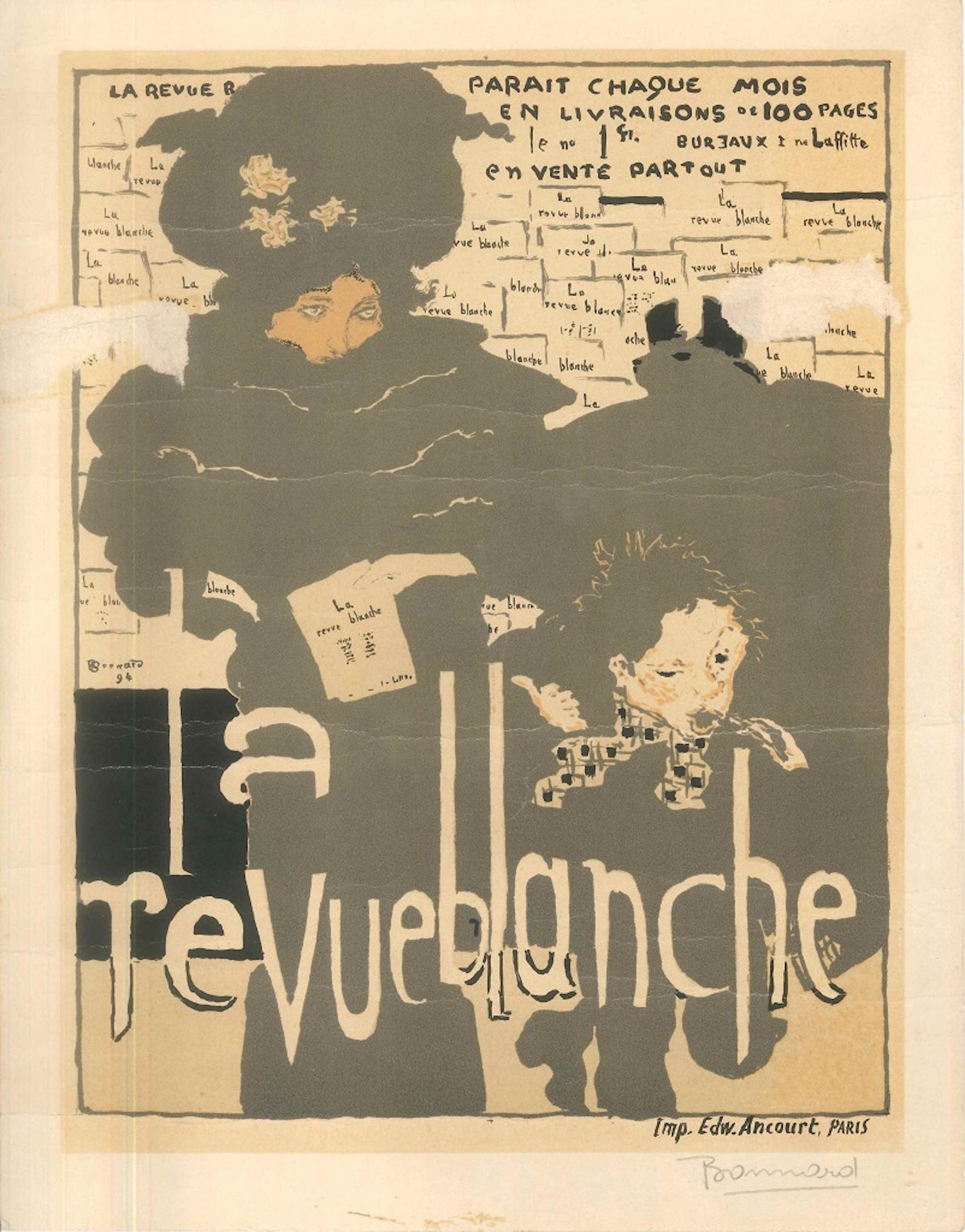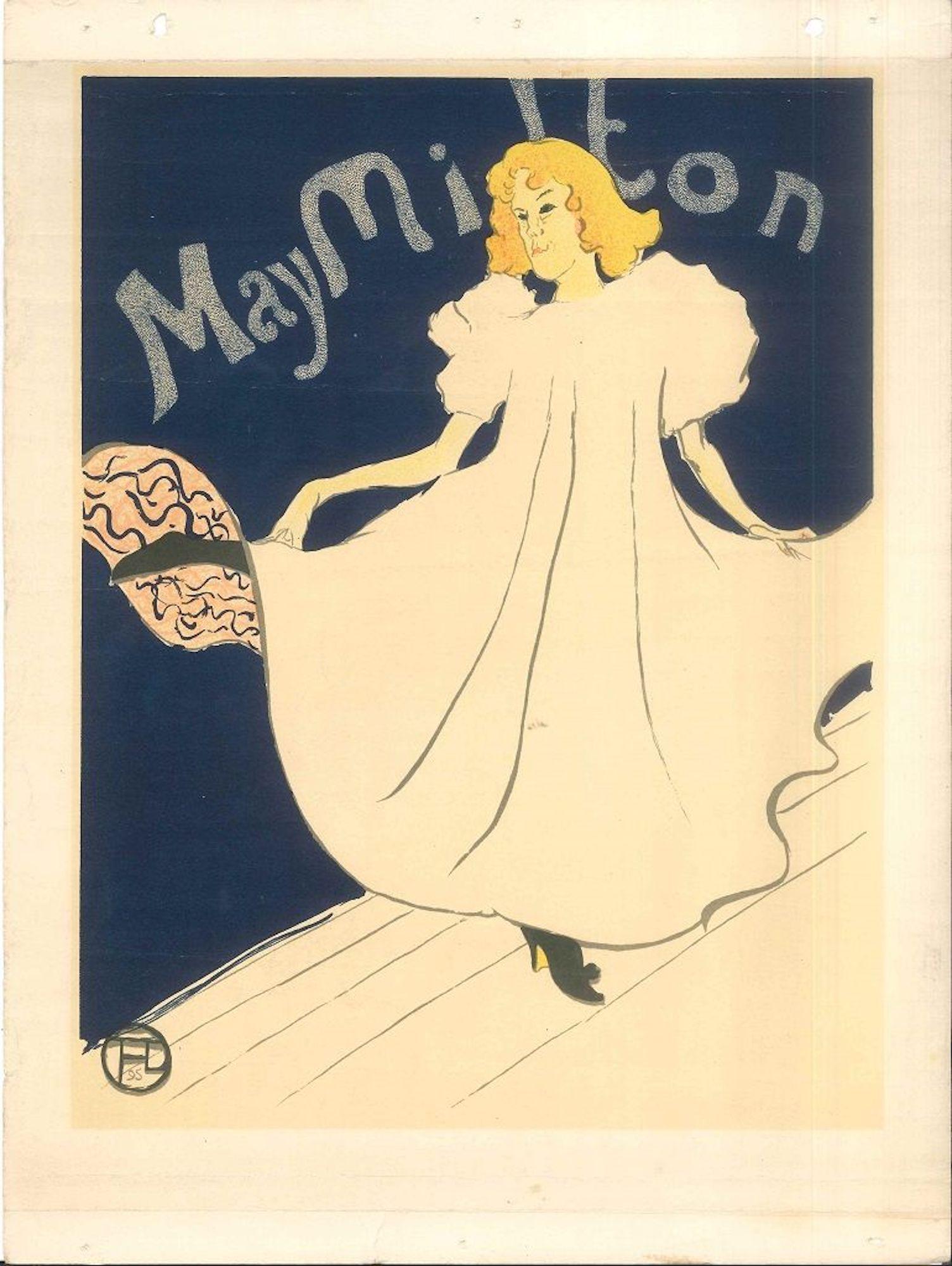Edouard VuillardCouverture pour Douze Lithographies en Couleurs, ou Passage et Interieurs1896-1898
1896-1898
About the Item
- Creator:Edouard Vuillard (1868-1940, French)
- Creation Year:1896-1898
- Dimensions:Height: 20.25 in (51.44 cm)Width: 15.75 in (40.01 cm)
- Medium:
- Movement & Style:
- Period:
- Condition:
- Gallery Location:Fairlawn, OH
- Reference Number:
Edouard Vuillard
French artist Edouard Vuillard was known for depicting intimate glimpses of Parisian life around the turn of the 20th century. His figurative prints, drawings and figurative paintings were concerned not just with their subjects but with the private surroundings of their homes and gardens. Vuillard was strongly influenced by Postimpressionist painters like Paul Gauguin.
Vuillard was born in the French commune of Cuiseaux in 1868. His family moved to Paris in 1877, and six years later, he received a scholarship to study at the prestigious Lycée Fontaine (now called the Lycée Condorcet). He graduated in 1885, joined the studio of painter Diogène Maillart and enrolled in courses at Académie Julian. Two years later, he was also accepted to the École des Beaux-Arts.
In 1889, the young Vuillard began meeting with a group of Symbolist painters and mystics known as Les Nabis (the prophets). For the subsequent decade, he was a prominent member of the group. During this period, Les Nabis and Vuillard himself were influenced by Japanese woodblock prints, featuring a blending of shapes and colors and a shallow depth of field. Any figures in the paintings seemed to meld into the background, and the loose brushwork prefigured the advent of abstract art.
Les Nabis broke up in 1900, and Vuillard's work took on a brighter and more colorful appeal. He turned his attention to painting gardens, joining a rich tradition of French garden painters. Vuillard was nominated for the Légion d'honneur in 1912, but he refused on the grounds that he did not seek compensation for his work other than the esteem of people with good taste.
After a brief stint in the military during World War I, Vuillard returned to life as a painter. In the 1920s, he was commissioned for portrait paintings by prominent Parisians like director Sacha Guitry, the Contesse Marie-Blanche de Polignac and fashion designer Jeanne Lanvin.
Throughout the 1930s, Vuillard received numerous commissions from the French government. In 1938, he had a major retrospective at the Musée des Arts Decoratifs and was elected to the Académie des Beaux Arts. He died in 1940, at the age of 71.
On 1stDibs, find Edouard Vuillard prints, drawings and paintings.
- ShippingRetrieving quote...Ships From: Akron, OH
- Return PolicyA return for this item may be initiated within 10 days of delivery.
- SevillanasLocated in Fairlawn, OHSevillanas Etching and color aquatint on laid watermarked paper, c. 1900 Signed by the artist in pencil lower right (see photo) Editioned in pencil lower left corner of sheet Publish...Category
Early 1900s Post-Impressionist Figurative Prints
MaterialsAquatint
- Les Amateurs d'EstampesBy Félix VallottonLocated in Fairlawn, OHLes Amateurs d'Estampes Woodcut, 1892 Initialed in the plate lower left Titled below image: "Gravure originale sur bois par F. Vallotton" Reference: Valloton and Goerg 107c, with the purple address stamp upper right center (see photo) Condition: Excellent Aging to sheet One spot of printers ink outside of the image in the upper margin Block size: 7 3/8 x 10 inches Sheet size: 10 1/8 x 12 3/4 inches Condition: Very good, aging (yellowing) to the paper Provenance: Edmund Sagot (1881-1917), noted Parisian art dealer and print publisher By decent Vallotton was a noted member of the Nabi, highly regarded for his paintings and original woodcuts. His works are in most major museums. Thank you for your interest in the Vallotton woodcut, Les Amateurs d’Estampes (Print Lovers). It depicts print collectors admiring the new offerings in the window of the Sagot Gallery in Paris. The woodcut is the second published version of the address card for Edmund Sagot the noted Paris art gallery with the change of address in lavender ink. It had moved and hence the change of address was necessary for publicity. The woodcut was created in 1892. It is unsigned as all the address cards are. There are two size variants, this being the larger of the two. It is printed on a tan wove paper. It is in excellent original condition. The provenance is from the Heirs of Edmund Sagot (1857-1917). by decent. The Sagot family was noted for selling posters, fine prints and original works of art. Edmund’s brother Clovis, was Picasso’s first dealer in Paris. The image is documented in the Vallotton and Goerg catalog raisonne in entry 107c Impressions of this image can be found in many museums including: Bibliothèque nationale de France De Young/Legion of Honor/Fine Art Museums of San Francisco Newfields, Indianapolis Museum of Art National Gallery of Australia Musee Des Beaux-Arts du Canada Van Gogh Museum Museum of Fine Arts, Houston Portland Art Museum Kunst Museum, Holland Philadelphia Museum of Art Yale University Art Gallery Félix Vallotton, in full Félix Edouard Vallotton, (born December 28, 1865, Lausanne, Switzerland—died December 28, 1925, Paris, France), Swiss-born French graphic artist and painter known for his paintings of nudes and interiors and in particular for his distinctive woodcuts. Vallotton was raised in a traditional bourgeois and Protestant household. After completing secondary school, he left Lausanne in 1882 for Paris to pursue art studies. Though he was accepted by the École des Beaux-Arts, he chose to attend the less traditional Académie Julian, where he studied with French painters Jules Lefebvre and Gustave Boulanger and enjoyed virtually free rein over his pursuits. He took the opportunity to study graphic arts—lithography and other methods of printmaking. He exhibited publicly for the first time in 1885 at the Salon des Artistes Français—the oil painting Portrait of...Category
1890s Post-Impressionist Figurative Prints
MaterialsWoodcut
- L'ACTEUR . . . . - On voit bien qu'il fait chaud . . . . . . . trois spectateursBy Honoré DaumierLocated in Fairlawn, OHL'ACTEUR . . . . - On voit bien qu'il fait chaud . . . . . . . trois spectateurs dans la salle ..... faut-il commencer ? . . . . LE DIRECTEUR .- Et encore un des trois est le vendeu...Category
1850s Romantic Figurative Prints
MaterialsLithograph
- Le Village (The village)By Marc ChagallLocated in Fairlawn, OHLe Village (The village) Original lithograph in colors, lsied in the artist's catalog raisonne of his prints, 1977 From: Derriere le Miroir, No. 225, Edition 15,000 as published in ...Category
1970s French School Figurative Prints
MaterialsLithograph
- Derriere le Miroir-Double Page (Behind the Looking Glass Double Page)By Marc ChagallLocated in Fairlawn, OHDerriere le Miroir-Double Page (Behind the Looking Glass Double Page) Original color llithogragp created by the artist for this ublication, 1964 Unsigned as issued From: Derriere le ...Category
1960s French School Figurative Prints
MaterialsLithograph
- The Hold Up, First StateBy George Wesley BellowsLocated in Fairlawn, OHSigned in pencil by the artist lower right Titled "Hold Up" by the artist in pencil. Signed by the printer Bolton Brown lower left. Edition: 42 in this state Note: In The Hold Up, se...Category
1920s American Realist Figurative Prints
MaterialsLithograph
- La Toilette Assise, 1925 Lithograph by Pierre BonnardBy Pierre BonnardLocated in Long Island City, NYArtist: Pierre Bonnard, French (1867 - 1947) Title: La Toilette Assise Year: 1925 Medium: Lithograph, signed 'PB' in the plate, signed 'P. Bonnard' lower right and numbered lower lef...Category
1920s Post-Impressionist Figurative Prints
MaterialsLithograph
- La Revue Blanche - Lithograph After P. Bonnard - 1951By (after) Pierre BonnardLocated in Roma, ITImage dimensions: 28 x 21.5 cm. La Revue Blanche is a wonderful chromolithograph, signed in pencil on the lower right margin by Pierre Bonnard. Sign...Category
1950s Post-Impressionist Figurative Prints
MaterialsLithograph
- Kam-Hill - Original Lithograph on Japan Paper by H.-G. Ibels - 1893Located in Roma, ITKam-Hill - From Le Café Concert is an original print, realized in 1893 by Henri-Gabriel Ibels. Black and white lithograph on paper. Good conditions except for some ripple along ...Category
1890s Fauvist Figurative Prints
MaterialsLithograph
- May Milton - Litho After H. de Toulouse-LautrecBy (After) Henri Toulouse LautrecLocated in Roma, ITImage dimensions: 29 x 20 cm. May Milton is a beautiful chromolithographed Art Nouveau poster, monogrammed and dated on plate on the lower left margin by the French artist Henri de Toulouse-Lautrec. A wonderful reduction of the famous Moulin Rouge poster...Category
1950s Post-Impressionist Figurative Prints
MaterialsLithograph
- Libert - Original Lithograph on Japan Paper by H.-G. Ibels - 1893Located in Roma, ITLibert - From Le Café Concert is an original print, realized in 1893 by Henri-Gabriel Ibels. Black and white lithograph on paper. Good conditions except for some ripples and some...Category
1890s Fauvist Figurative Prints
MaterialsLithograph
- Portrait of Woman - Lithograph by E. Laurent - 1901 ca.By Ernest LaurentLocated in Roma, ITPortrait is a splendid lithograph realized by the French painter and engraver M. Ernest Laurent from one of his own works exhibited at the Salon in 1901. On the lower left, below the image, “Gazette des Beaux-Arts” is printed; on the lower right “Imp. D’Art A. Clot, Paris”; on the lower center “Portrait/ Lithographie de M. Ernest Laurent d’apres son tableau / (Societé des Artistes français – Salon de 1901)”. The conditions of the work are excellent. The paper presents an irregular cut on the left margin, and the print is not perfectly centered on the piece of paper. M. Ernest Laurent was an exponent of Neo-Impressionism and Divisionism, pupil of Ernest Hébert...Category
Early 1900s Post-Impressionist Figurative Prints
MaterialsLithograph





